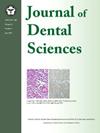Preserving pulp vitality for teeth with post-vital pulp therapy symptoms by retrying pulp-preserving procedures: A retrospective clinical study
IF 3.4
3区 医学
Q1 DENTISTRY, ORAL SURGERY & MEDICINE
引用次数: 0
Abstract
Background/purpose
The occurrence of post-vital pulp therapy (VPT) symptoms is perplexing for dentists, and root canal treatment (RCT) is preferred for such conditions. Furthermore, managing post-VPT symptoms, rather than performing RCT, would preserve pulp vitality and enhance VPT outcomes. This study aimed to evaluate the efficacy of VPT retrials in preserving pulp vitality and substituting RCT in teeth with post-VPT symptoms.
Materials and methods
VPT was performed on the exposed pulp during caries removal in symptomatic and asymptomatic teeth. VPTs were repeated in teeth with post-VPT symptoms. This study screened multi-time-practiced VPT cases from a VPT-performed data pool. The presence of vital pulp tissue after minimized pulp resection (MPR) was a prerequisite for substituting RCT with VPT retrials. A total of 22 cases from 19 patients were included in this study. MPR was introduced to maximize the preservation of the vital pulp.
Results
After performing VPT, post-VPT symptoms occurred in pre-VPT asymptomatic teeth, or pre-VPT symptoms were modified in teeth with pre-VPT symptoms. The rate of pre-VPT irreversible pulpitis (IP), comprising symptomatic/asymptomatic IP, was 81.68%. The most prevalent post-VPT symptom was heightened sensitivity to thermal stimuli (68.2%), followed by spontaneous pain (45.5%). The post-VPT IP was 63.6%. VPT retrials resolved 90.9% of cases with post-VPT symptoms.
Conclusion
VPT retrials using MPR could enhance VPT outcomes and be a viable alternative to RCT for teeth with post-VPT symptoms.
通过再次尝试保留牙髓手术来保持牙髓活力:一项回顾性临床研究。
背景/目的:髓瓣治疗(VPT)后症状的出现令牙医感到困惑,根管治疗(RCT)是治疗此类症状的首选方法。此外,处理 VPT 后症状而不是进行 RCT,可以保持牙髓活力并提高 VPT 的疗效。本研究旨在评估 VPT 重试在保护牙髓活力和替代有 VPT 后症状的牙齿的 RCT 方面的功效:材料: 对有症状和无症状的牙齿,在去除龋齿的过程中对暴露的牙髓进行 VPT。对有 VPT 后症状的牙齿重复进行 VPT。本研究从VPT执行数据池中筛选出多次执行VPT的病例。最小化牙髓切除术(MPR)后牙髓组织有活力是用 VPT 复诊替代 RCT 的前提条件。本研究共纳入了 19 名患者的 22 个病例。引入微创牙髓切除术是为了最大限度地保留重要的牙髓:结果:实施 VPT 后,VPT 前无症状的牙齿出现了 VPT 后症状,或 VPT 前有症状的牙齿改变了 VPT 前症状。VPT前不可逆牙髓炎(IP)的发生率(包括有症状/无症状IP)为81.68%。VPT后最普遍的症状是对热刺激的敏感性增强(68.2%),其次是自发性疼痛(45.5%)。VPT 术后 IP 为 63.6%。90.9%的 VPT 重试病例在 VPT 后症状得到缓解:结论:使用 MPR 进行 VPT 复诊可提高 VPT 的疗效,对于有 VPT 后症状的牙齿来说,是替代 RCT 的一种可行方法。
本文章由计算机程序翻译,如有差异,请以英文原文为准。
求助全文
约1分钟内获得全文
求助全文
来源期刊

Journal of Dental Sciences
医学-牙科与口腔外科
CiteScore
5.10
自引率
14.30%
发文量
348
审稿时长
6 days
期刊介绍:
he Journal of Dental Sciences (JDS), published quarterly, is the official and open access publication of the Association for Dental Sciences of the Republic of China (ADS-ROC). The precedent journal of the JDS is the Chinese Dental Journal (CDJ) which had already been covered by MEDLINE in 1988. As the CDJ continued to prove its importance in the region, the ADS-ROC decided to move to the international community by publishing an English journal. Hence, the birth of the JDS in 2006. The JDS is indexed in the SCI Expanded since 2008. It is also indexed in Scopus, and EMCare, ScienceDirect, SIIC Data Bases.
The topics covered by the JDS include all fields of basic and clinical dentistry. Some manuscripts focusing on the study of certain endemic diseases such as dental caries and periodontal diseases in particular regions of any country as well as oral pre-cancers, oral cancers, and oral submucous fibrosis related to betel nut chewing habit are also considered for publication. Besides, the JDS also publishes articles about the efficacy of a new treatment modality on oral verrucous hyperplasia or early oral squamous cell carcinoma.
 求助内容:
求助内容: 应助结果提醒方式:
应助结果提醒方式:


